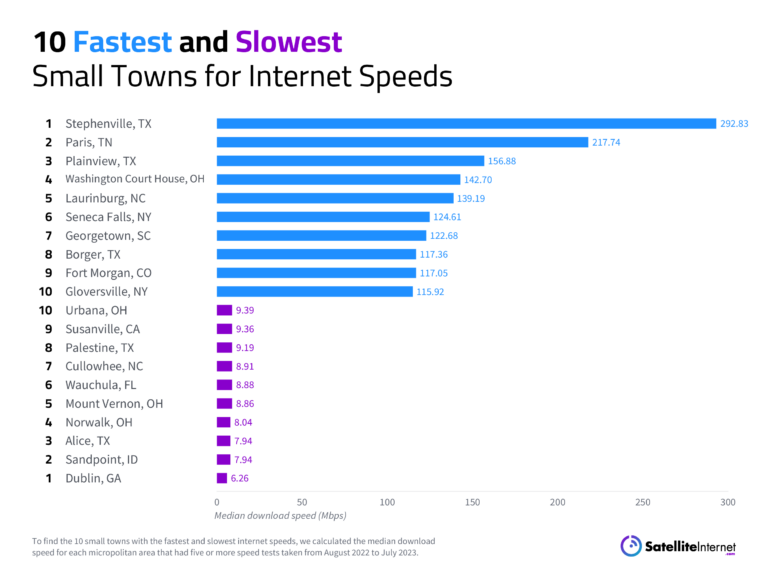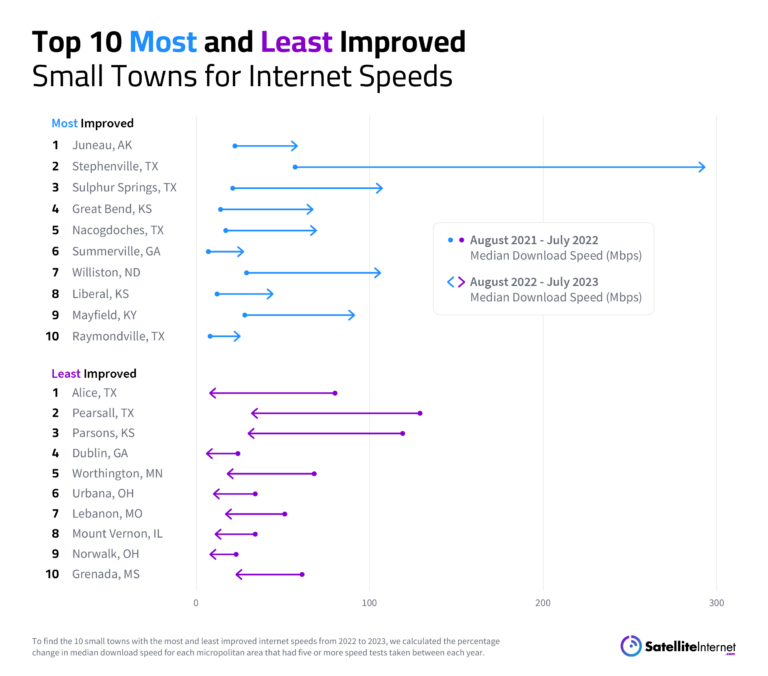Considering the digital divide between urban, suburban, and rural areas, we also go over connection types, providers, and the rural areas that have increased (or reduced) speeds over the past 12 months.
In June 2023, President Joe Biden pledged that every U.S. household would have high-speed internet by 2030. The pledge includes more than $40 billion in funding to upgrade or add service across the country. Already, internet speeds have gained momentum, with average download speeds in rural areas reaching an average of 111.87Mbps—a 122% increase from 2022.
Between August 2022 and July 2023, SatelliteInternet.com collected data from 313,754 speed tests in small towns and cities (micropolitan areas) to measure download speeds. We assessed more than 512 micropolitan areas from California to New York and Texas to Alaska.
We found that the average download speed in rural U.S. areas is 111.87Mbps, and the median download speed is 45.66Mbps. While both of those are significantly faster than the average and median speeds in 2022, they still lag behind the national average. In the U.S., the average download speed is 145.46Mbps (30% faster than rural areas) and the median download speed is 70.99Mbps (50% faster than rural areas).
Still, some micropolitan areas are outliers and have fast internet speeds, like Stephenville, Texas: It exceeds the national average download speed by 101%! While it’s still difficult for many rural Americans to get online due to the digital divide, our 2023 report shows that progress is being made—and where that progress is happening.

